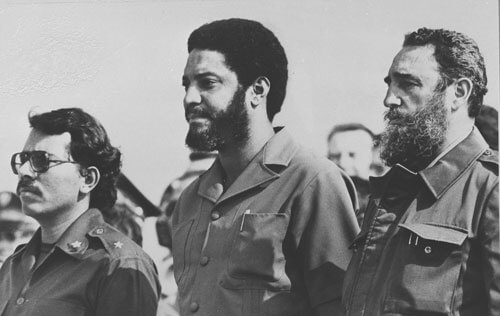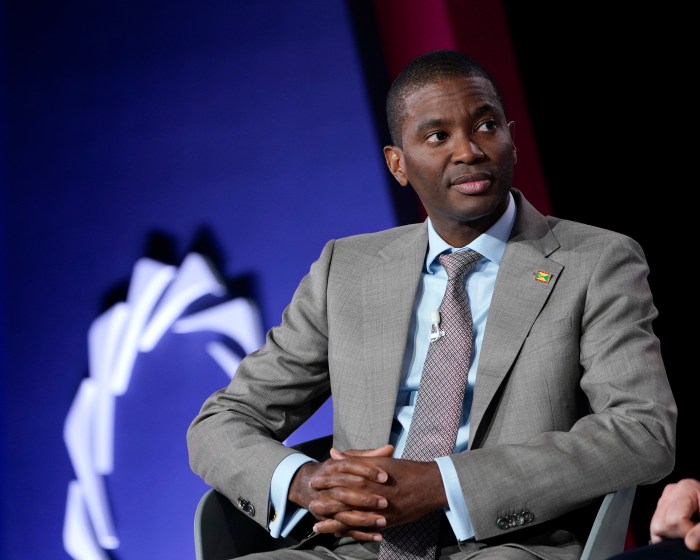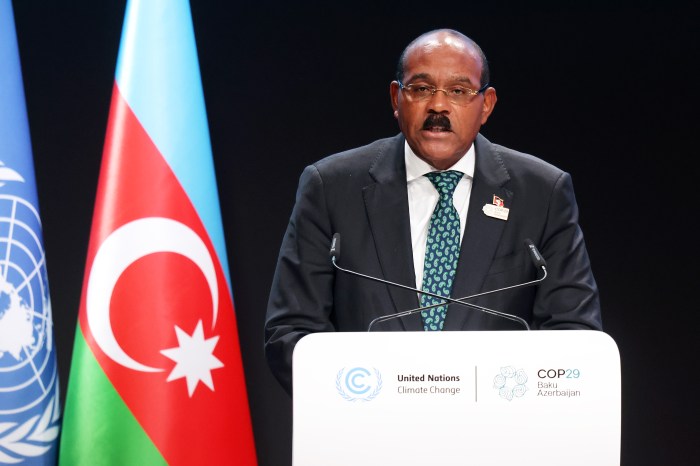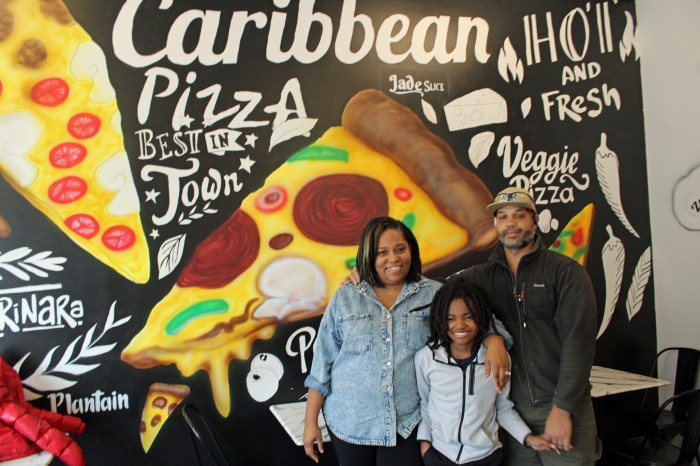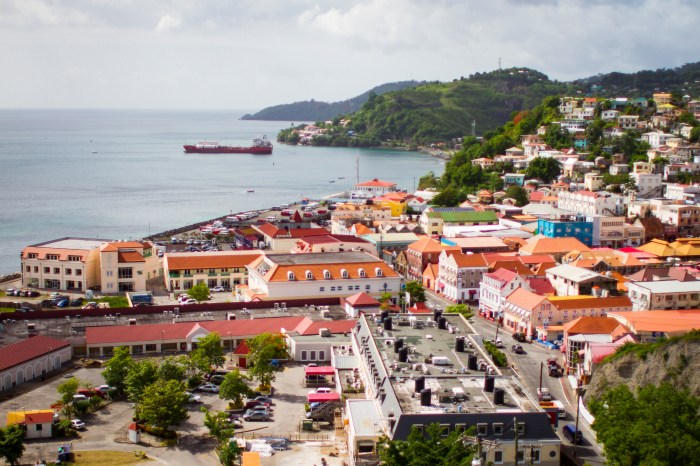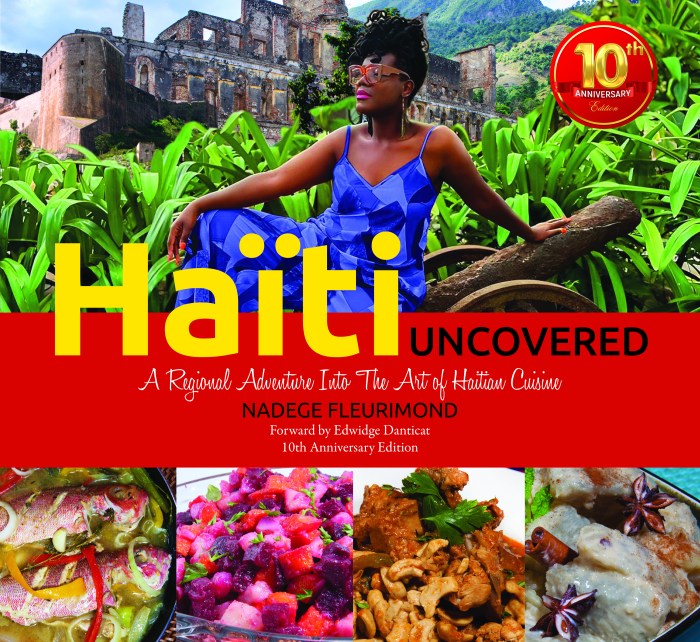Maurice Rupert Bishop was the prime minister of Grenada from March 15, 1979 to Oct. 19, 1983, the day when he was executed at Fort Rupert in St. George’s, the Grenada capital.
At the same time, Bishop was also commander-in-chief of the Revolutionary Armed Forces of Grenada; chairman of the Central Committee of the New Jewel Movement (NJM); and minister of information, defense and interior of the People’s Revolutionary Government of Grenada (PRG).
According to the Grenada Revolution Online, Bishop was 6’ 3” tall, an excellent speaker and “a handsome man with recognized charismatic features of personality.”
The Grenada Revolution Online said Bishop was known to be pragmatic in that he held that the results of an idea are the best criteria by which to judge its merit.
But The Grenada Revolution Online said Bishop’s charisma and his democratic sensibilities “proved not to be a substitute for wielding authority and leadership.”
Born on May 29, 1944 in [Dutch] Aruba, he moved to Grenada from Aruba in 1950 with his late Grenadian parents Rupert and Alimenta Bishop, along with his sisters Ann and Maureen.
Bishop attended his first school in Grenada when he was six years old, the Wesley Hall Primary School and, in the next year, passed on to St. George’s Roman Catholic Primary School.
Maurice Bishop went on scholarship – one of four government scholarship students – to the Roman Catholic Presentation Brothers’ College in 1957. At this secondary school, Bishop won the 1962 Principal’s Gold medal for “outstanding academic and overall ability.”
Bernard Coard – who was Bishop’s deputy and who fell out with Bishop in leading his eventual assassination – and Bishop did not attend the same secondary school. Coard attended the Grenada Boys Secondary School [GBSS].
At Presentation, Bishop attained his Senior Cambridge and Higher School Certificates. He was president of the Students’ Union, president of the Debating Society, and foundation member and president of the Historical Society.
Bishop was also the editor of the school magazine at Presentation College, the “Student Voice,” according to the Grenada Revolution online. He received the 1962 Principal’s Gold Medal at Presentation College.
He was co-founder in 1963, with Bernard Coard, of the Grenada Assembly of Youth After Truth. This organization was designed to enable the students of Presentation College and GBSS to “address the important questions of the day,” The Grenada Revolution Online said. Bishop graduated from Presentation Brothers’ College in 1962.
After secondary school graduation, for about nine months, Bishop and Coard continued the “Grenada Assembly of Youth After Truth” while Bishop was working at the Registry in Grenada.
But The Grenada Revolution Online said, “The Grenada Assembly of Youth After Truth” dissolved after nine months. Maurice Bishop left for Great Britain in December 1963, at 19, to study law, and Coard went to Brandeis University in the United States to study economics.
Bishop studied law at the Holborn College of Law, London University. He enrolled in post-graduate studies at King’s College and also achieved a L.L.B. degree – University of London Gray’s Inn, one of the four Inns of Court that admit students wishing to become barristers. Bishop became a Barrister (lawyer) in 1966.
He was President of the West Indian Students Society at London University.
Putting his law studies into practice, Bishop co-founded a legal aid clinic for the West Indian community in Notting Hill, London, according to The Grenada Revolution Online.
It said Bishop was also active, during the 1960s, in a group called the Standing Conference of West Indian Organizations and in the Campaign Against Racial Discrimination (CARD) in the United Kingdom. CARD, a multi-racial organization, was formed in 1964.
By 1969, The Grenada Revolution Online said CARD was breaking up over disputes about ideology and white participation.
In 1966, Bishop married a nurse, Angela Redhead; and, that same year, was called to the bar in London but never completed his post graduate studies.
By 1967, though, Bishop had accomplished the requirement for practicing law in Lincoln’s Inn. His law studies were completed in 1969.
Bishop worked in the civil service as a surtax examiner until 1970. He also did voluntary work with the Legal Aid Clinic in Notting Hill Gate.
During Bishop’ stay in the United Kingdom, he traveled to Czechoslovakia and East Germany.
Sandford & Vigilante said that Bishop read “Marx, Engels, Lenin, Stalin, Mao, and C.L.R. James,” who Sandford & Vigilante described as “an influential Trinidadian Trotskyite.” He was influenced by Julius Nyerere’s “Arusha Declaration” issued in 1967 and the Tanzanian socialist leader’s book “Ujamaa: Essays on Socialism” published in 1968 by Oxford University Press.
After passing through Trinidad, The Grenada Revolution Online said Bishop returned to Grenada by February/March, 1970 after seven years in England. He then set up a local private law practice.
In Grenada, it said Bishop was associated with the Trinidadian National Joint Action Committee (NJAC).
On May 10, 1970, Bishop led a demonstration in Grenada “of favorable approval” for the black-power uprising in Trinidad and Tobago, including support for “Grenadian brothers” on that neighboring island. He was inspired by the Black Power Movement and Black dignity, The Grenada Revolution Online said.
During December 1970, a gathering called the “Rat Island Black Power Conference” was held off St. Lucia, The Grenada Revolution Online noted.
At that conference, it said Bishop and Unison Whiteman met the late George Odlum of St. Lucia, Trevor Munroe of Jamaica, and other West Indian intellectuals.
The group, “Forum”, closely aligned with the National Action Front (NAF) in Grenada, emerged from that conference.
The Grenada Revolution Online said regional intellectuals from St. Lucia, St. Vincent and the Grenadines and Grenada “took on consolidation in a Caribbean association of political groups called ‘Forum’”, The Grenada Revolution Online said.
“Forum” primarily protested the policies of then Grenada leader Eric Matthew Gairy and discussed issues of black nationalism, according to The Grenada Revolution Online.
In Grenada, it said “Forum” joined with “Cribou” in 1971 to uphold International Solidarity Day, sponsored by the “Pan-African Secretariat” in Guyana and a “National Conference on the Rights of Black People”, a group protesting racism in Great Britain.
Barristers Maurice Bishop and Kenrick Radix went to the defense of striking nurses from their legal office at Cockroach Alley, St. George’s, The Grenada Revolution Online said.
The Nurses Strike, which took place in November-December 1970, protested conditions at St. George’s General Hospital.
The Forum group, along with nurses, school children, students, trade union officials, and members of the Grenada National Party (GNP), and other opposition groups, organized a large December protest, resulting in the arrest of Bishop and about 30 others.
But they were acquitted after a lengthy trial of seven months, The Grenada Revolution Online said.
It said a secret conference was held in Martinique in February 1972 [possibly delayed to March 31- April 3, 1972], which Bishop helped to organize.
The Grenada Revolution Online said the conference was aimed at setting up a “new Caribbean society” based on socialist principles. It said conference attendees “discussed and strategized actions for liberation movements.”
Maurice Bishop, Franklyn Harvey, Kenrick Radix and a few other urban professionals were the leaders of Movement for Assemblies of the People (MAP) from St. George’s, The Grenada Revolution Online said.
Out of “Forum” grew the Movement for the Advance of Community Effort (MACE) in 1972 and MAP a few months later, The Grenada Revolution Online said.
In January of 1973, Bishop took the lead at La Sagesse in St. David’s of the large gathering protesting the locked gates to the beach at Lord Bronlow’s estate.
Bishop was an early New Jewel Movement (NJM) leader on Mar. 11, 1973, when MAP and JEWEL merged. He was Joint Coordinating Secretary of the NJM, along with Unison Whiteman.
The publication of the NJM, the New Jewel, was issued weekly.
The Grenada Revolution Online said a “major event in the escalation between Gairy forces” and the NJM was “Bloody Sunday”, Nov. 18, 1973.
It also said a “second major event in the escalation between Gairy forces” and the NJM was “Bloody Monday” on Jan. 21, 1974.
The afternoon before Independence Day celebrations of Feb. 6, 1974, Bishop was charged with seeking to assassinate others.
According to an official report, police said they found at Bishop’s home supplies of “arms, ammunition, equipment for erecting [unclear], specially made dungaria (sic) uniforms, a blue-print to assassinate the prime minister at his night club and documents containing lists of names of guerilla camps and their members.”
Bishop spent Independence Day incarcerated and was released on bail on Feb. 8.
Soon after, Bishop travelled to North America, and, on returning, he went to Guyana, attending a meeting of the Regional Steering Committee of the 6th Pan African Congress held on March 26-29, 1974.
Later in the year, on Oct. 4, 1974, Bishop acted as legal counsel for Desmond “Ras Kabinda” Trotter, accused with Roy Mason of the murder of a white American tourist earlier in the year. The trial was held Oct. 7, 1974.
Bishop was a NJM Bureau member in May 1975. In October, he addressed a seminar, titled “Fascism: A Caribbean Reality?” in Trinidad and Tobago, organized by the Oilfield Workers Trade Union.
Bishop first visited Cuba in May 1977. Bishop and Unison Whiteman, fellow coordinating secretary of the NJM, were sponsored by the Cuban Institute of Friendship with People (ICAP).
“Operation Apple” — the code name for the coup d’etat on March 13, 1979, in which Bishop’s NJM overthrew Sir Eric Matthew Gairy’s Government — marked the official beginning of a new government, based on years of preparation.
Bishop became prime minister of Grenada on March 15, 1979, at 34 years of age.
According to The Grenada Revolution Online, rumors speculated about an overthrow of Bishop’s leadership, with Bernard Coard as the new leader. “Bishop knew about these rumors,” The Grenada Revolution Online said.
In 1983, disputes at the top level of the NJM party leadership occurred. A group within the party attempted to get Bishop to either step down or agree to a power-sharing agreement with Deputy Prime Minister Bernard Coard.
Bishop rejected these proposals and was eventually deposed and placed under house arrest during the first week of October 1983 by Coard.
Large public demonstrations demanding the restoration of Bishop subsequently took place in various parts of the island.
In the course of one of these demonstrations, Bishop was freed from house arrest by the crowd.
In unclear circumstances, Bishop made his way to the army headquarters at Ft. Rupert (known today as Fort George).
After he arrived, a military force was dispatched from another location to Ft. Rupert.
Reports said fighting broke out later at Ft. Rupert, with many civilians being killed.
Bishop and seven others, including cabinet ministers, were captured. Later in the day, on Oct. 19, they were executed by an army firing squad.
Shortly afterwards, the United States, under then President Ronald Reagan, invaded Grenada under the pretext of rescuing American medical students at St. George’s University.
Late Dominica Prime Minister Dame Mary Eugenia Charles, who appeared on American television with Reagan, had appealed with Caribbean leaders for a “rescue effort” in Grenada.
On May 29, 2009, Grenada’s international airport (formerly Point Salines International Airport) was renamed Maurice Bishop International Airport.
Speaking at the ceremony, St. Vincent and the Grenadines Prime Minister Dr. Ralph Gonsalves, renowned as a former Marxist-Leninist, said: “This belated honor to an outstanding Caribbean son will bring closure to a chapter of denial in Grenada’s history.”


